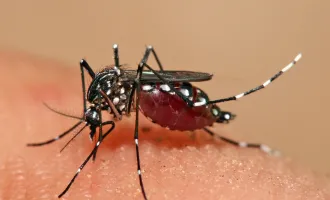
Photo by Towfiqu barbhuiya on Unsplash
Fighting the Common Cold in Space
For years we have known that spaceflight causes immune dysfunction, weakening the human body’s ability to fight off even the common cold. Add extreme conditions such as microgravity, exposure to radiation and irregular sleep, a cold may just become life threatening.
Understanding how space travel weakens the immune system could inspire ways to counteract it.
In an article published last month in Scientific Reports, a team of Russian scientists used quantitative proteomic analysis for a high-level understanding of how the human body responds to spaceflight.
Led by Irina Larina and Evgeny Nikolaev, this team analyzed the abundance of 125 proteins in the blood of 18 cosmonauts, or Russian astronauts.
They compared protein levels before and after long-duration spaceflights to the Russian module of the International Space Station (ISS).
The logic of this study was simple. The investigators asked whether specific protein levels were changed after space travel, and how long it took for changes to resolve after returning to earth.
In organisms, proteins dictate systemic responses to changing environments.
Proteins circulating in the blood are particularly telling of current systemic activities — what is the body doing right now?
This is especially true for the immune system.
Just as a fire in a city leads to more distress signals and more fire trucks being sent out, when the body is under attack the immune system sends out more signals (cytokines) and fire trucks (immune cells) into the blood to travel toward and help fight pathogens.
In response to the stresses of space, astronauts may experience immune depression, where distress signals and fire trucks are never sent during the fire, or immune over-activation where this response is occurring in the absence of true danger.
Indeed in 2014, NASA conducted an Integrated Immune Study on ISS crewmembers, led by Dr. Brian Crucian, which demonstrated altered levels of cytokines and reduced functional integrity of circulating immune cells.
NASA concluded that longer missions, to Mars and beyond, could exacerbate changes in the immune system.
The recent work by the Russian team supports NASA’s findings, demonstrating that the human body undergoes systemic adaptations in response to space travel, including changes in immunity.
A technique called mass spectrometry (MS) was used for protein identification and quantification. MS involves breaking proteins into fragments, and measuring their mass and charge. The unique mass signatures are then mapped to known protein signatures.
After obtaining these measurements for all 125 proteins from all 18 cosmonauts, the researchers used a computational pattern recognition method, called linear discriminant analysis, to classify proteins as either unchanged post-flight or having short (one day) versus long (seven days) recovery periods to pre-flight levels.
Further examination of processes that these altered proteins contributed to indicated that several played an important role in immunity.
For example, Complement factor D, a member of the classical complement pathway that functions to clear blood-born pathogens and damaged cells, was significantly reduced post-flight but returned to normal levels by seven days back on earth.
Spaceflight induced immune changes appear transitory, specific to the conditions of space. The investigators reported no immune-related proteins that failed to return to normal after seven days.
In their interpretation of protein expression recovery period, the authors explain that proteins which failed to recover by seven days post-flight represent physiological adaptations to spaceflight.
They did not hypothesize as to whether these changes were expected to be permanent, or required longer recovery.
Proteins that changed after landing represent rehabilitation to terrestrial conditions, like Fetuin-B which is involved in several processes including response to systemic inflammation. This protein showed significant perturbations only seven days after landing.
This study employed a powerful strategy for measuring a variety of human proteins, but had several limitations.
Investigators only looked at blood protein levels before takeoff and after return, lacking information on immune state during actual space travel and information on the actual functional capacity of immune cells.
If we want to understand the integrity of the human immune system in space, we have to study immune function in that specific context, not just protein levels before and after.
Additionally, the protein panel wasn’t intentionally designed to study the effects of space travel on the immune system, but rather was based on proteins reported as potential indicators of non-infectious disease.
Only a handful of the 125 proteins studied contribute directly to immune processes, thus highlighting the need for future studies to develop a more immune-targeted panels.
There is much more work to be done to explicitly determine how space travel influences immune state and whether the changes induced could be life threatening.
There are obvious challenges to addressing these questions, including limited sample access, but these studies stress the importance of continuing the effort.
NASA’s Integrated Immune team is still actively pursuing answers, and potential ways to manipulate immunity in space.
For more information and other exciting research on human survival in space, visit NASA’s Human Research program on their website at www.nasa.gov/hrp.



